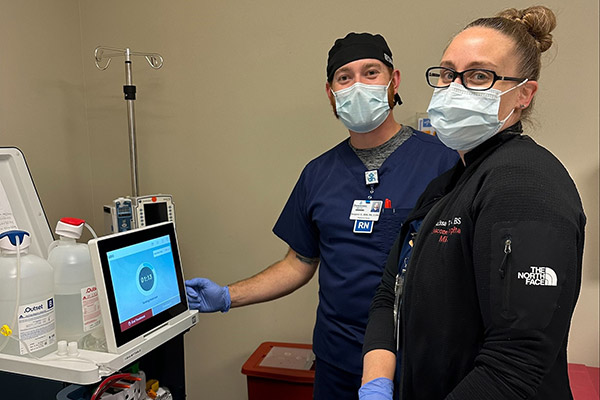John & Julia’s Story: How One Care Partner Transformed Their At-Home Dialysis Journey
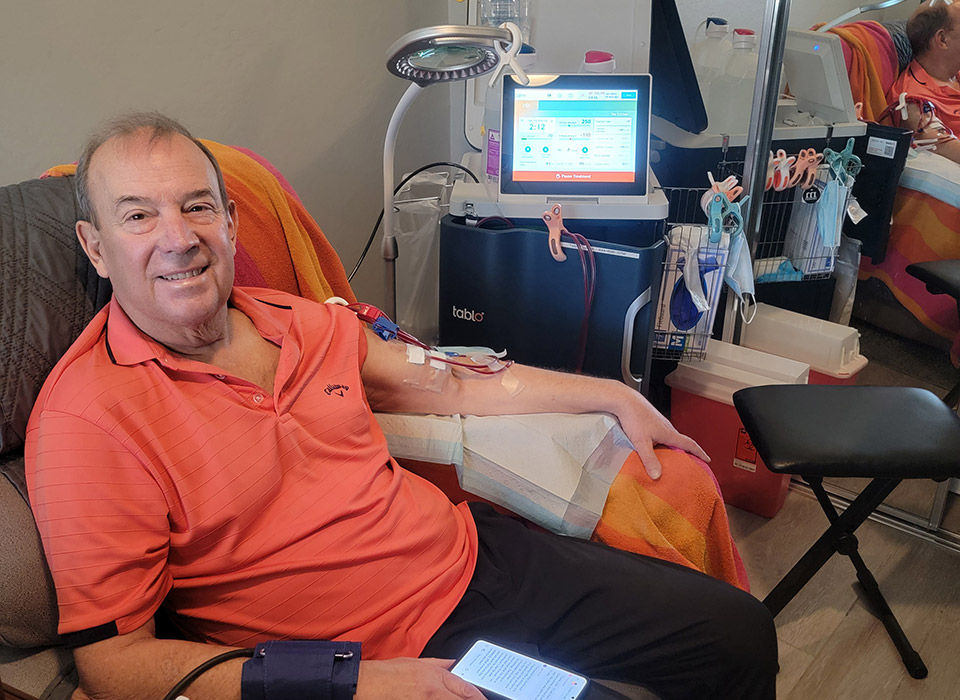
Summary
This story is an expansion of “End of an Era,” a post shared by John Churan on his blog Just Take an Hour.
When John Churan went in for a routine physical at age 56, he didn’t expect to end up in the hospital just days later.
“You’ve never really been sick your whole life, other than a cold or flu along the way,” he recalled. “Then you get a call from your doctor saying you need to go to the ER as soon as possible, because you’re in kidney failure and at high risk of a heart attack.”
The diagnosis: multiple myeloma, a blood cancer that had already begun damaging John’s kidneys. For more than a decade, John managed his illness with various treatments. Along the way, he began blogging about his experience; first to keep friends and family informed, and later as a way to process and share the realities of long-term illness.
Despite treatment efforts, his kidney function continued to decline. Eventually, dialysis became inevitable.
“My kidneys fought their hardest and kept me going,” John said. “And then finally, they waved that white flag and gave up. And that’s when my journey with dialysis started.”
A Difficult First Chapter with Dialysis
Like many patients, John and his wife and care partner, Julia, were steered toward in-center dialysis by default. There was little discussion of alternatives; just a plan to place him wherever a chair was available, regardless of distance or convenience. The responsibility to explore better options fell entirely on the Churan family.
John began in-center treatment, and his health continued to decline. The experience was impersonal and physically draining for John, and emotionally taxing for Julia. “It was almost like a factory,” Julia said. “I wasn’t even allowed to go in. If he was cold, I couldn’t put a blanket over him.”
“I’d come back from a session and was basically a zombie,” John recalled. “I’d come home and go to bed. My day was shot.”
With each session, John grew weaker. Walking even a few feet was exhausting. Physical therapy wasn’t possible. And Julia, watching it all unfold, knew something had to change.
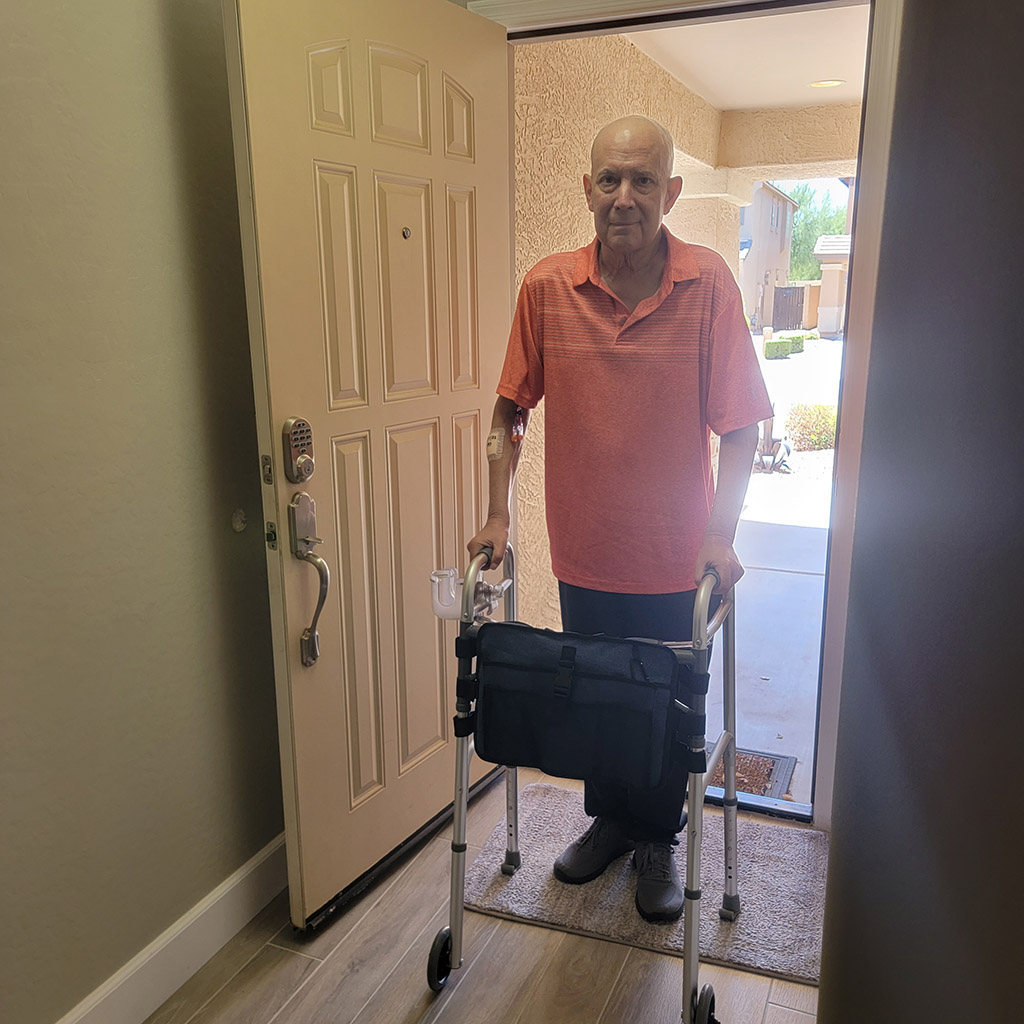
Bringing Dialysis Home
Determined to find a better solution, Julia began researching at-home dialysis. Only one home hemodialysis option was available in the Phoenix area at the time, and she pushed to get John trained. They immediately ran into roadblocks — most clinics had long waitlists, meaning John would need to continue in-center for up to six months before the Churans could even begin training. But Julia was determined not to give up, and eventually, they got started with home dialysis using a system from NxStage.
Being out of the center was a step forward. “He immediately started getting more energy,” Julia said. “He started feeling better.” But the day-to-day experience was stressful and emotionally taxing, especially for Julia, who had no medical background and a strong aversion to needles.
“I was very needle and bloodphobic,” she said. “It took me a whole month to be able to just do one needle. It was a major emotional challenge.”
There were technical hurdles, too. Frequent equipment failures disrupted treatments. “In the 20 months that he was on the machine, we had 10 different failures,” Julia said. She also found herself acting as both nurse and technician, spending hours on the phone with support, swapping out parts, and troubleshooting alarms. “I wasn’t sleeping,” she said. “I was very challenged.”
Home dialysis had clearly improved John’s quality of life, but the burden the current system placed on Julia wasn’t sustainable. There had to be a better option.
A Turning Point with At-Home Dialysis: Tablo
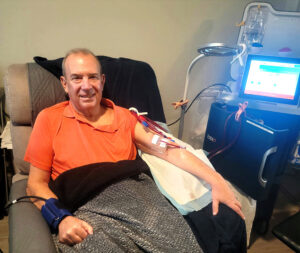
Everything changed when Julia discovered the Tablo® Hemodialysis System through an online support group. She was captivated by the idea that this new approach could help them return to a more normal life. Julia called clinics, added their name to waiting lists, and stayed in close contact with anyone who might help bring the technology to Arizona. “I was on everybody’s list,” she said. “As soon as it comes, we want a Tablo machine.”
A year later, the call came through. “It was like Christmas morning when we got Tablo,” Julia said.
From day one, Tablo made things easier for the Churan family. There was less to manage, fewer alarms, and no more endless troubleshooting. “The stress was eliminated,” Julia said. “We could go out to dinner again, and play games. Just be normal.”
More Than Just a Dialysis Machine
Switching to Tablo changed the way Julia could help care for John. “When we were on the other machine, Julia was afraid to leave the room,” John said. “With Tablo, she felt like she could do other things around the house.”
And for John, the ability to reduce treatment from five days to four felt like a gift. “That was huge,” John said. “You can’t beat that with a stick, I’ll tell you.”
That extra time gave him room to regain strength. “While I was in the hospital, I lost 50 pounds,” he said. “Walking across the room was about all I could do. Now I’m walking four miles a day.”
Their at-home dialysis setup became something they could trust. Julia even customized their space: a warm chair for John, a cart to organize supplies, and a dedicated room that let them close the door — literally and emotionally — on dialysis when treatment was done.
“It was like this cloud of stress just evaporated,” said Julia.
Learning to Advocate
What still frustrates Julia is that none of this was presented as an option when John first started dialysis. “If his doctor had just said, ‘I think you can do this and it will make his life better,’ it would have been a no-brainer and we would have never even had him in-center,” she said.
Instead, they had to figure out everything on their own: how to access home dialysis, how to advocate for a better dialysis machine home setup, how to push for training.
“You have to advocate for yourself or your loved one,” Julia said. “You have to go out there and you have to explore.”
Support groups, online forums, and connecting with other patients made all the difference. “I was going to do everything that I possibly could to make whatever life he had better,” she said. “We didn’t know that a transplant was ever in our future. We felt this was going to be our life, and we had to make it as good as possible.”
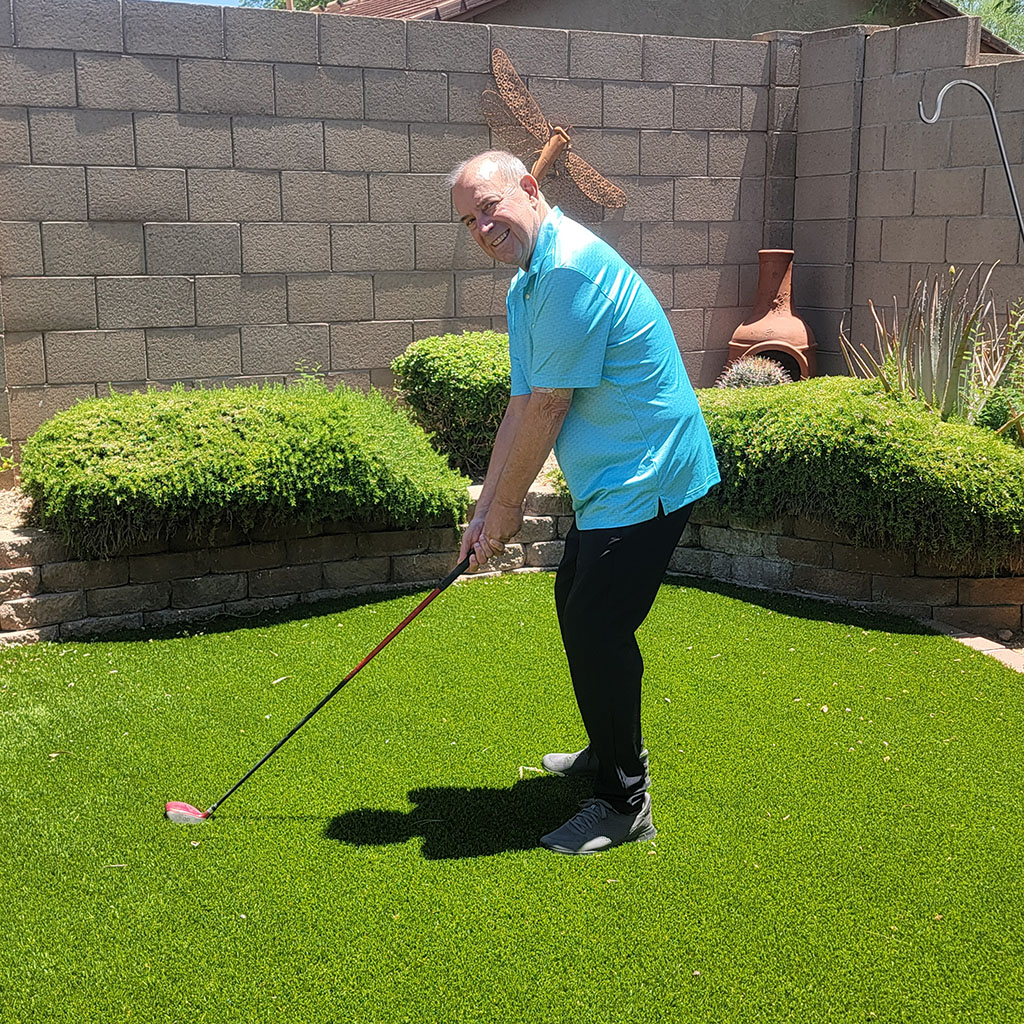
A Second Chance
John eventually became strong enough to receive a kidney transplant, something neither of them thought was even on the table. “We didn’t even know that getting a kidney was on the radar,” Julia said. “It was a huge blessing and surprise to us.”
For the Churans, the impact of switching to Tablo is still hard to overstate. “Home hemodialysis changed John’s life,” she said. “But switching to Tablo improved our life.”
Quotes have been lightly edited for clarity.
